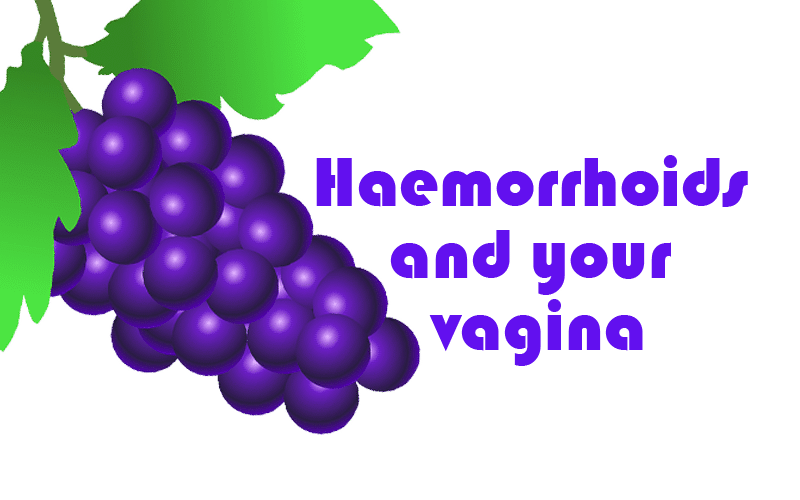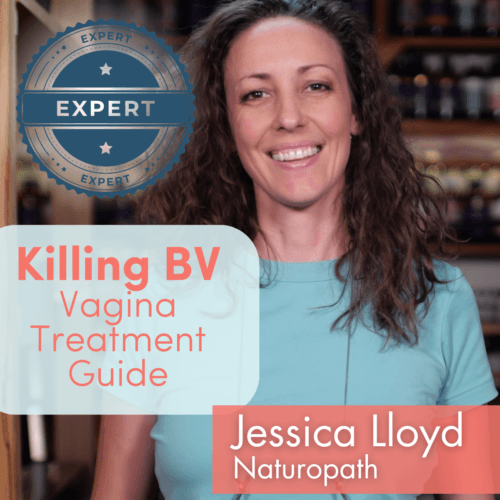If you have haemorrhoids and suffer from recurrent BV, UTIs or other urogenital infections, you may find your haemorrhoids are contributing to your vagina problems.
While you need to address the root cause of your haemorrhoids, in the meantime you need to keep your anal area free from faecal debris.
Those little dingleberries collect faeces around their edges, a reservoir for pathogenic bacteria to easily spread to your vagina.
Vulvovaginal and urinary tract infections and the link with haemorrhoids
It’s not rocket science to link lingering poop tucked up into the outside of your body in crevices with vulvovaginal and urinary tract infections. It’s sometimes hard enough keeping ourselves infection-free, without the pocket of poop making our lives miserable.
The most common infections related to haemorrhoids include bacterial vaginosis (BV), aerobic vaginosis (AV), and urinary tract infection (UTI).
Why most wipes take your butt into the badlands
Toilet paper is dry and nasty on haemorrhoids, not to mention inefficient at cleaning. Toilet or baby wipes, however, typically cause more inflammation than even dusty toilet paper can.
Avoid most commercial butt wipes, makeup wipes or baby wipes at all costs if you have haemorrhoids. The chemicals used to keep these wipes moist and undegraded after long storage times usually mean bad for skin, let alone your delicate haemorrhoids.
You may find that wipes make your anus sorer and redder and more painful. This is the chemical residue on your raw anus perpetuating the problem. If you have haemorrhoids and a sore anus that just won’t go away, your first step is to get rid of the wipes.
A better option to wipes – toilet paper gel
If you really want to use wipes, we recommend using a natural product that is purpose-built for caring for your butt. Our favourite haemorrhoid gel you use with your regular toilet paper is Wipegel by Zero Taboos.
You buy a bottle of this to squirt onto the toilet paper to instantly turn your toilet paper into a soft, damp, chemical-free, haemorrhoid-friendly wipe that doesn’t tear up your toilet paper.
While the bottle is not convenient to carry around with you (unless you have a giant handbag or backpack, and poop a lot outside your house), you can use it easily at home.
This gel smells good and feels good, and is made out of natural ingredients, with witch hazel the main active ingredient. Witch hazel is an astringent. Astringents tighten and stitch proteins together, so make skin tighten and firm.
Think of how a glass of dry red wine feels in your mouth – that sort of tight, dry feeling is the action of tannins, which are an astringent. This astringent action helps to shrink haemorrhoids from whence they came, while also being soothing and healing.
Because Wipegel is made out of natural ingredients, it’s septic tank friendly and not an environmental hazard.
How to keep your anus really clean while you have haemorrhoids
You have a few options to manage your poop-collecting haemorrhoids.
Use plain water and your hand/a cloth
You can also rinse your anus with plain water every time you defecate, but just with water. The best and least painful way to do this is actually by hand.
You might think this is gross, but remember how painful those puppies are? Rinsing yourself with your fingers under running water is actually the best way to clean your butt.
This works best in the shower, naturally, but you can also quickly rinse out your anus with just your fingers or a gentle, saturated cloth anytime. You’ll feel clean and there’ll be no itching or poop smell coming from your bottom from your poop-catching haemorrhoids.
Try to avoid using a lot of soap on haemorrhoids – drying your anal area out won’t make it feel any better. Washing your anus with water after going to the toilet isn’t always practical, especially in public toilets where the source of water is separate from the toilet.
Make sure to be hygienic and considerate of others who may be using the bathroom after you. Don’t spread more germs!
Using a portable bidet
Portable bidets are usually plastic or silicone devices that you fill with water before you go into the toilet, and can rinse out your anus (not your rectum) to clean any faeces residue off.
These devices are also a bit cumbersome to carry around, but worth their weight in gold if you don’t want to carry the haemorrhoid gel or use another source of water each toilet stop.
Using a real bidet
A bidet is the real option of choice here, but nobody really has these anymore except some Europeans. The bidet squirts warm water at your anus, to dislodge any malingerers, but be careful not to spread faeces around in the process.
Dealing with your haemorrhoids so they go away Haemorrhoids are caused by a vein or veins bulging around your anus due to downward pressure.
The veins weaken, and eventually bulge out like a balloon. Haemorrhoids will probably come and go, but once they are a permanent feature, you need to consider your options.
Straining on the toilet is the usual cause of haemorrhoids, so you need to stop that cold-turkey. Just stop. Your intestines are not muscles, and cannot get a poo out – all you are doing is forcing the weight of your entire body onto your poor little anus. No wonder it pops a gasket.
If you have constipation all the time, you need to treat your constipation before you do anything else, and that does not mean with laxatives and stool-softeners. It means adjusting your diet so that your digestive tract works as it should.
Poor gut motility and slow transit time (mouth to anus) of food cause bad bacteria to proliferate in your intestines (gut dysbiosis), contributing to vaginal dysbiosis. That is, an imbalance in the resident flora.
Constipation leads to haemorrhoids, and both of these things lead to more vaginal and urinary tract infections.
Why am I constipated?
If you have been chronically constipated for much of your life or for a long time, you have no doubt tried all the classic solutions: eat more fibre, take a fibre supplement, drink more water, etc.
Being constipated is almost always diet-related, so go and see someone about your diet – a nutritionist, a naturopath, a dietician. It’s usually easy to spot the problems.
What you may have found is that eating more vegetables or taking a fibre supplement only makes your constipation worse, or that drinking more water does nothing.
If this is the case, you may have what’s known as a FODMAP intolerance. Look up Monash University’s research into FODMAPs, download their app, and give the low-FODMAP diet a try.
You need to be very strict with the diet, however, to see if this helps you. You’ll know within about three days if it will help you. You need to solve your constipation to solve your haemorrhoids, and that probably means diet changes. In the meantime, keep your butt clean!





